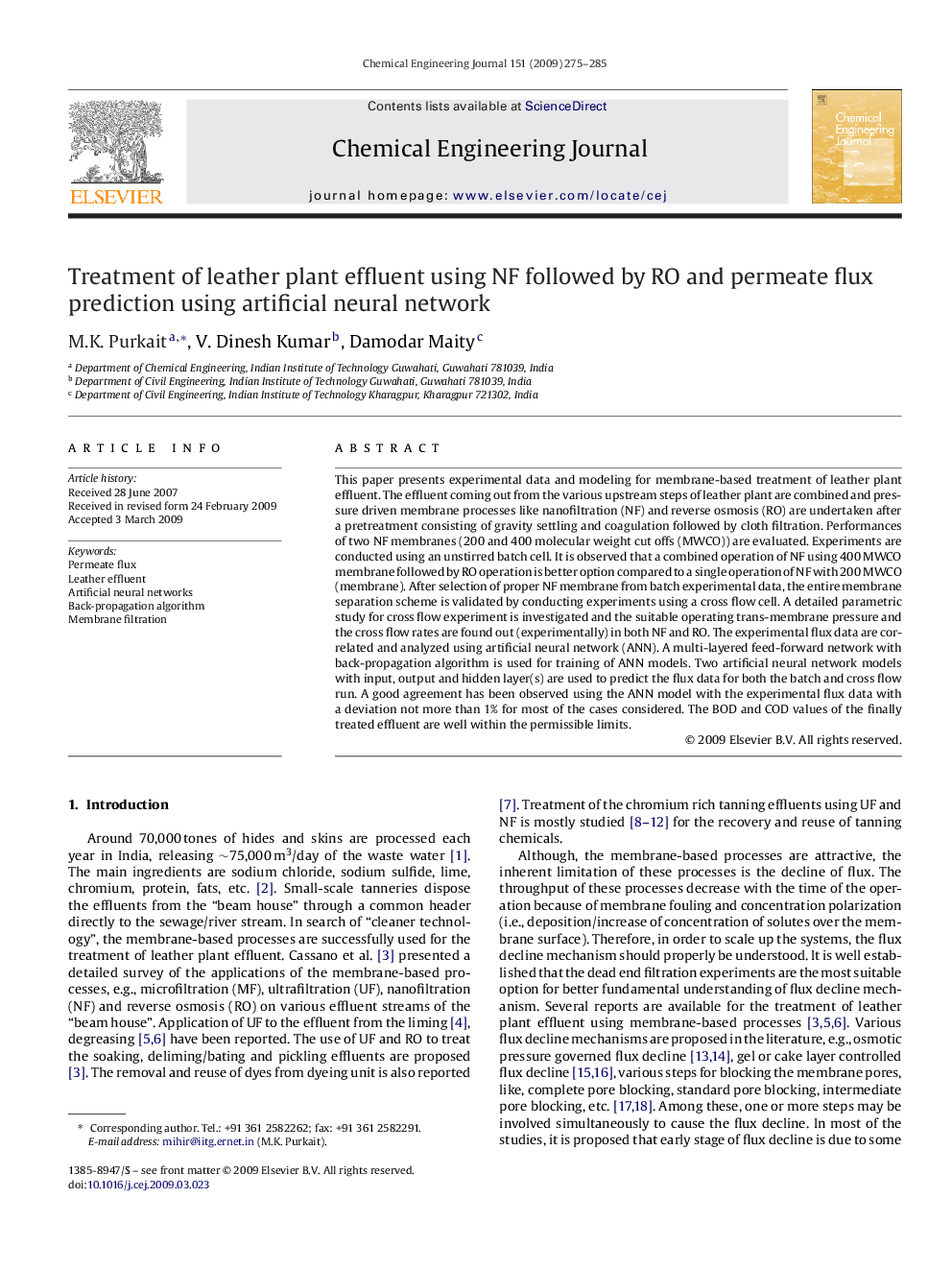| کد مقاله | کد نشریه | سال انتشار | مقاله انگلیسی | نسخه تمام متن |
|---|---|---|---|---|
| 152381 | 456494 | 2009 | 11 صفحه PDF | دانلود رایگان |

This paper presents experimental data and modeling for membrane-based treatment of leather plant effluent. The effluent coming out from the various upstream steps of leather plant are combined and pressure driven membrane processes like nanofiltration (NF) and reverse osmosis (RO) are undertaken after a pretreatment consisting of gravity settling and coagulation followed by cloth filtration. Performances of two NF membranes (200 and 400 molecular weight cut offs (MWCO)) are evaluated. Experiments are conducted using an unstirred batch cell. It is observed that a combined operation of NF using 400 MWCO membrane followed by RO operation is better option compared to a single operation of NF with 200 MWCO (membrane). After selection of proper NF membrane from batch experimental data, the entire membrane separation scheme is validated by conducting experiments using a cross flow cell. A detailed parametric study for cross flow experiment is investigated and the suitable operating trans-membrane pressure and the cross flow rates are found out (experimentally) in both NF and RO. The experimental flux data are correlated and analyzed using artificial neural network (ANN). A multi-layered feed-forward network with back-propagation algorithm is used for training of ANN models. Two artificial neural network models with input, output and hidden layer(s) are used to predict the flux data for both the batch and cross flow run. A good agreement has been observed using the ANN model with the experimental flux data with a deviation not more than 1% for most of the cases considered. The BOD and COD values of the finally treated effluent are well within the permissible limits.
Journal: Chemical Engineering Journal - Volume 151, Issues 1–3, 15 August 2009, Pages 275–285